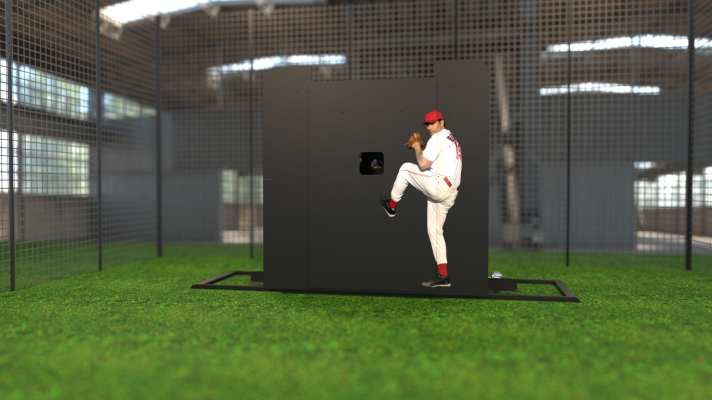The first pitching machine dates back well over 100 years. Obviously things have come a long way since that injury-inducing, gunpowder-fueled machine made its debut at Princeton University, but most modern systems are more or less the same. A ball is manually or mechanically dropped into a spinning wheel or wheels, which propel it toward the battery at high velocity.
It’s gotten the job done, so why quibble, right? But there’s a lot of potential room for innovation here. Advances in AI, stat tracking, advanced metrics and robotics could fit together nicely for a proper 21st-century twist on a classic. This is my first time seeing the Trajekt Arc, but the product seems to speak for itself. It’s a pitching robot designed to learn and re-create real-world pitches from real-world pitchers.
The Athletic ran a nice spot the other week about how the Cubs are using the system to mimic Madison Bumgarner in practice. The system adjusts to the World Series hero’s left arm release point, and serves up an image of the bearded Diamondbacks’ pitcher on its display. It’s not exactly the same as facing him on the field, but by all accounts, it’ll work in a pinch. “It’s fucking unbelievable,” the story quotes a team official going full locker room blue.

Image Credits: Trajek
According to parent company, Trajekt Sports, seven of the MLB’s 30 teams are currently using the robot. St. Louis–based sport data firm, Rapsodo, meanwhile, claims that all 30 are using its services. Earlier this week, the two firms announced a partnership that brings a wider range of pitch variables to the system.
Says Rapsodo:
Users can simply add in pitch characteristics to the Trajekt Arc, and the machine will replicate the pitch. Before practice, the Trajekt Arc will throw a series of test pitches, and Rapsodo’s PRO 3.0 will measure the pitches and provide real-time feedback to the Trajekt Arc to compare their desired metrics with the measured ones. Some of those metrics include speed, spin, movement and strike zone location. Once the data is captured, that pitch will now be added to the devices system and available for the team to use in training their athletes.

Image Credits: Rapsodo
With analytics having becoming such a core part of the game over the past few decades (happy 20th anniversary to the Oakland A’s improbable 20-win Moneyball streak), it makes sense to find a way to integrate that into the data-obsessed tech world.
“I like it, personally,” Mets hitting coach (and former third baseman) Eric Chavez said in an interview with the New York Post. “We can’t duplicate anything that happens in the game, but it’s the closest thing we’ve got. But I’m not playing anymore, and how they’re going to use it moving forward, I’m not sure. It’s just there for whoever wants it.”
It sure beats a cannon full of gunpowder.
